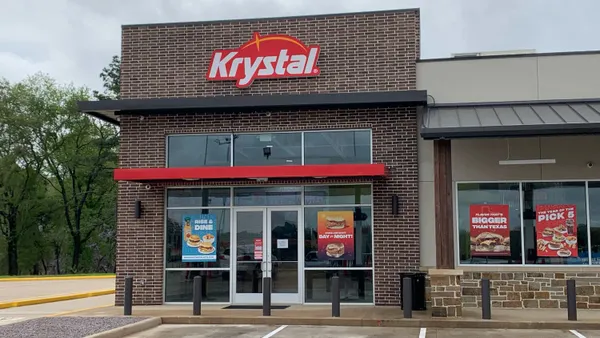Rising food costs aren’t just putting the squeeze on consumers. Food service establishments are also facing shrinking margins as the cost of ingredients skyrockets.
In many ways, tracking and adapting to the changing cost of ingredients is nothing new. Since the first person conceived of the idea of making and selling food, there’s been a focus on managing costs in order to turn a profit.
But what is new is the volatility of the market and its ongoing effect on profit margins and menu pricing. Rising inflation, continued supply chain interruptions and increasing consumer demand for quality ingredients mean that average wholesale prices continue to spiral, month over month.
In fact, ingredient prices are a full 29% higher than pre-pandemic levels, and not a day goes by without something costing more than it did the day before. For a restaurant that uses dozens, even hundreds, of ingredients, that represents a staggering increase in the cost of doing business – and a massive pricing challenge.
Price volatility takes a toll on time and profits
Ever-changing ingredient costs put restaurateurs in a difficult position. Do they increase menu prices to compensate for higher costs and risk losing customers? Or do they let higher costs eat into profit margins? Where is the tipping point?
Tracking the cost of ingredients can be incredibly time consuming and tedious. Maintaining accurate records requires someone to manually update each ingredient every time the price changes, a task that requires special skills and time that can’t be spent in other areas of the business.
Even with up-to-the-minute information about how much ingredients cost and, therefore, how much a particular menu item costs to produce, how does one decide what to charge the customer? Many food service establishments follow a general rule of thumb that ingredient costs should represent 30% of the total cost to the consumer, but one size doesn’t necessarily fit all when it comes to maintaining the profit margins needed to remain successful in a highly competitive industry.
Without a laser focus on the cost of ingredients, many food service establishments will continue to do business as usual, with costs mounting, margins shrinking and profits dwindling as the months go by.
Easing the pain of maintaining margins
So, what is the answer to the ongoing challenge of ever-changing ingredient costs? The easiest way to maintain profit margins without having to sacrifice limited time and labor resources is to use a solution that helps you understand wholesale food prices, track inventory and manage recipes.
When evaluating a food-costing and recipe management tool, look for these critical features that can help keep the business profitable and efficient:
-
Import invoices – Import any spreadsheet file, such as an invoice from a supplier, to automatically update the cost of ingredients or add new ingredients. This reduces the time required to maintain accurate ingredient costs.
-
Automatically update recipes – Update existing ingredient records anywhere they appear in a recipe to reflect the true cost of the finished product.
-
Update POS systems – Send updated pricing directly to a POS system.
-
Adjust menu prices – With information about target margins for categories like appetizers, salads, entrees or desserts, the software should be able to suggest a selling price based on actual ingredient costs.
-
Analyze recipes – Analyze individual recipes to determine the percent variance between actual and target profit margins. This allows owners and chefs to easily identify which menu items are most and least profitable.
-
Identify cost creep – After setting a variance percentage, e.g. 5%, the solution should be able to automatically flag recipes and ingredients that increase in cost by that percentage. That helps food service establishments stay on top of rapidly growing food costs or seasonal price changes.
-
Reduce shrinkage – The solution should be integrated with The Book of Yields for the most accurate weight/volume conversions, as well as trim and cooking yields for more than 1,000 raw food ingredients. This optimizes ordering, particularly when working with different vendors, and it provides insights for recipe development that can reduce shrinkage and optimize yields.
The key to success in the high-stakes world of restaurant management is clear visibility into and tight control over profit margins. Tools like reciProfity give food service establishments the detailed, accurate and up-to-the-minute information they need to manage ingredient costs, make pricing decisions, adjust menus and optimize yields.
Deb Williams, Systems Manager at Dunn Brothers Coffee and a reciProfity user, said “reciProfity was very easy to implement and makes it possible to accurately share and track our recipe costs and nutrition information.”
To learn how you can boost profits and ease the squeeze of inflation with reciProfity, visit reciProfity.com and start your 30-day free trial.










